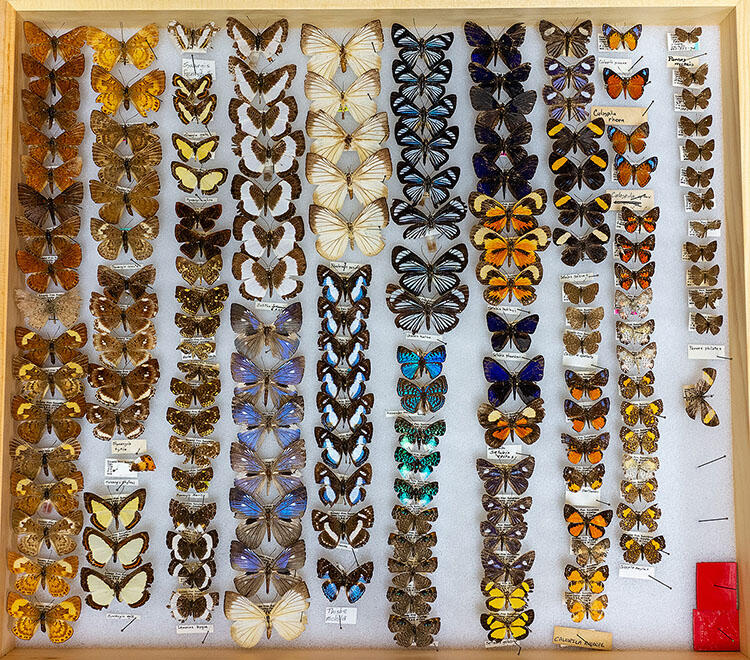A New Wing for Butterflies
 A view of the eastern range, which contains the groups of smaller butterflies.
A view of the eastern range, which contains the groups of smaller butterflies.© AMNH
The museum's research collection of 1.3 million butterflies has been relocated, from the 5th floor of the museum to a spacious, bright, modern facility in the Richard Gilder Center for Science, Education, and Innovation. The new facility has 3,000 ft2 of climate-controlled space, modern lighting, 100 ft of counters for spreading drawers out for curation and research; a lab area and dedicated quarantine freezers.
There are two connected ranges:
- The western room contains the swallowtails (Papilionidae) and larger Nymphalidae, housed in larger drawers and cabinets.
- The eastern range contains all the other, smaller butterflies, in smaller, standard-size AMNH drawers and cabinets: sulphurs (Pieridae), smaller Nymphalidae, blues and hairstreaks (Lycaenidae), metalmarks (Riodinidae), and skippers (Hesperiidae).
 Two drawers of Riodinidae from the DeVries Collection.
Two drawers of Riodinidae from the DeVries Collection.© AMNH
 © AMNH
© AMNH
A total of 8,500 drawers of specimens are housed in 188 new double-door steel cabinets that are 8-feet tall, on a compactor system. The facility can accommodate 75 additional cabinets, for 30% expansion space. The butterfly move allows more expansion of the moth collections, which remain in the main insect compactor facility on the 5th floor.
Recently received is the butterfly collection of Phil DeVries and Carla Penz, who have collectively spent nearly 80 years researching the behavior, ecology, population biology, evolution, and systematics of butterflies. The collection contains approximately 21,000 adults of about 1,000 species, with 1,000 immatures of about 250 species, most of which are Neotropical.
Researchers welcome! Contact us for additional details.